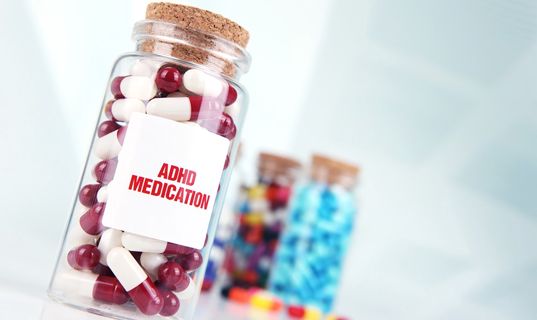
Attention Deficit Hyperactivity Disorder (ADHD) is one of the most commonly diagnosed neurodevelopmental disorders, especially among children and teenagers. Traditionally associated with symptoms like impulsivity, difficulty concentrating, and hyperactivity, ADHD has often been approached with a primarily medical lens. For decades, stimulant medications have served as the go-to treatment, helping many individuals focus better and manage their symptoms. But as awareness grows and more research emerges, the question arises: is medication always the best—or only—solution?
Understanding ADHD Beyond the Surface
ADHD is more than just being fidgety or easily distracted. It’s a complex condition that affects executive functioning, emotional regulation, and even social interaction. While it often presents in childhood, many people continue to experience symptoms into adulthood.
The American Psychiatric Association states that about 5% of children in the U.S. have ADHD, though some studies suggest the number may be higher due to increased awareness and diagnosis. Importantly, ADHD doesn’t manifest the same way in everyone. Some may struggle primarily with inattention, others with hyperactivity and impulsivity, and many with a combination of symptoms.
Given this variability, it stands to reason that a one-size-fits-all treatment approach may not be sufficient.
The Role of Medication: Relief or Reliance?
Stimulant medications like Adderall, Ritalin, and Vyvanse are commonly prescribed to manage ADHD. These drugs target the brain’s dopamine and norepinephrine levels, which are often dysregulated in those with ADHD. For many individuals, the results are transformative: improved focus, reduced impulsivity, and better overall functioning.
But while medication can provide significant relief, it’s not without its downsides. Common side effects include insomnia, loss of appetite, irritability, and, in some cases, increased anxiety. Long-term effects are still being studied, but concerns about dependency and misuse—especially among teens and college students—have raised red flags.
The case of Adderall, for instance, highlights this issue clearly. Though highly effective when used properly, it’s also one of the most commonly misused prescription drugs, particularly among students who use it to stay awake and cram for exams.
Why the Rush to Medicate?
There’s an undeniable convenience to medication. It offers fast-acting relief and can dramatically improve quality of life for those severely affected by ADHD. In many cases, especially when symptoms are disrupting school, work, or home life, a prescription may be warranted. ADHD affects focus, impulse control, and behavior. Treatment often includes behavioral therapy and medication. Finding the Best ADHD medication depends on individual needs, symptoms, and medical history.
However, critics argue that our reliance on pharmaceuticals sometimes overshadows deeper issues. Are we too quick to medicate children who don’t fit into rigid educational structures? Are we addressing the root causes—or just the symptoms?
Some suggest that ADHD, in many cases, is a mismatch between a child’s learning style and their environment. Traditional classroom settings often demand quiet, sustained attention and limited movement—conditions that can be stifling for a child with high energy or a kinesthetic learning preference.
Exploring Alternatives and Complementary Approaches
The good news is that treatment options for ADHD have evolved far beyond medication. Today, many professionals advocate for a multi-modal approach, blending behavioral therapy, lifestyle changes, and educational support.
1. Behavioral Therapy:
Cognitive Behavioral Therapy (CBT) and other structured interventions help individuals develop coping mechanisms, improve organizational skills, and manage emotions. These therapies are especially helpful for children and adults who struggle with low self-esteem or frustration stemming from their symptoms.
2. Diet and Nutrition:
While no diet can “cure” ADHD, studies have shown links between nutrition and symptom severity. Omega-3 fatty acids, for instance, may help improve focus and behavior. Reducing sugar and processed foods can also have a positive impact on mood and energy levels.
3. Exercise and Mindfulness:
Physical activity is known to boost dopamine and serotonin levels—two neurotransmitters crucial for focus and mood regulation. Regular exercise, yoga, and mindfulness practices like meditation can reduce anxiety and improve attention spans.
4. Educational Interventions:
Tailoring education to match learning styles can make a world of difference. Simple classroom adjustments like allowing movement breaks, using hands-on learning tools, or providing visual aids can help children with ADHD thrive.
5. Parent and Teacher Training:
Empowering adults with the tools to support children with ADHD can reduce friction at home and school. Training programs can offer strategies for discipline, communication, and positive reinforcement.
The Importance of Individualized Care
Not every child or adult with ADHD will respond to medication—or need it. For some, a structured behavioral approach may be enough. For others, combining therapy with low-dose medication may offer the best results.
Take, for example, the case of a college student who was prescribed Adderall during finals season. Initially, the medication helped them stay on task. But over time, they began relying on it even when studying wasn’t urgent. It became clear that the underlying issue wasn’t just attention—it was poor time management, sleep deprivation, and academic pressure. Once these were addressed through coaching and therapy, their need for medication decreased.
This isn’t to say that Adderall or other medications are inherently bad. For many, they are life-changing tools. The key is to ensure they are part of a broader, thoughtful treatment plan—not a substitute for it.
Toward a More Balanced Future
ADHD isn’t a one-path journey, and neither should its treatment be. As we continue to learn more about the brain, behavior, and learning styles, the importance of personalized care becomes increasingly clear.
Yes, medication like Adderall can be a powerful ally in the ADHD toolbox. But so can therapy, structure, nutrition, and understanding. By broadening our approach, we can empower those with ADHD to not just cope, but to truly thrive—in their own way.
0 comments
Be the first to comment!
This post is waiting for your feedback.
Share your thoughts and join the conversation.
